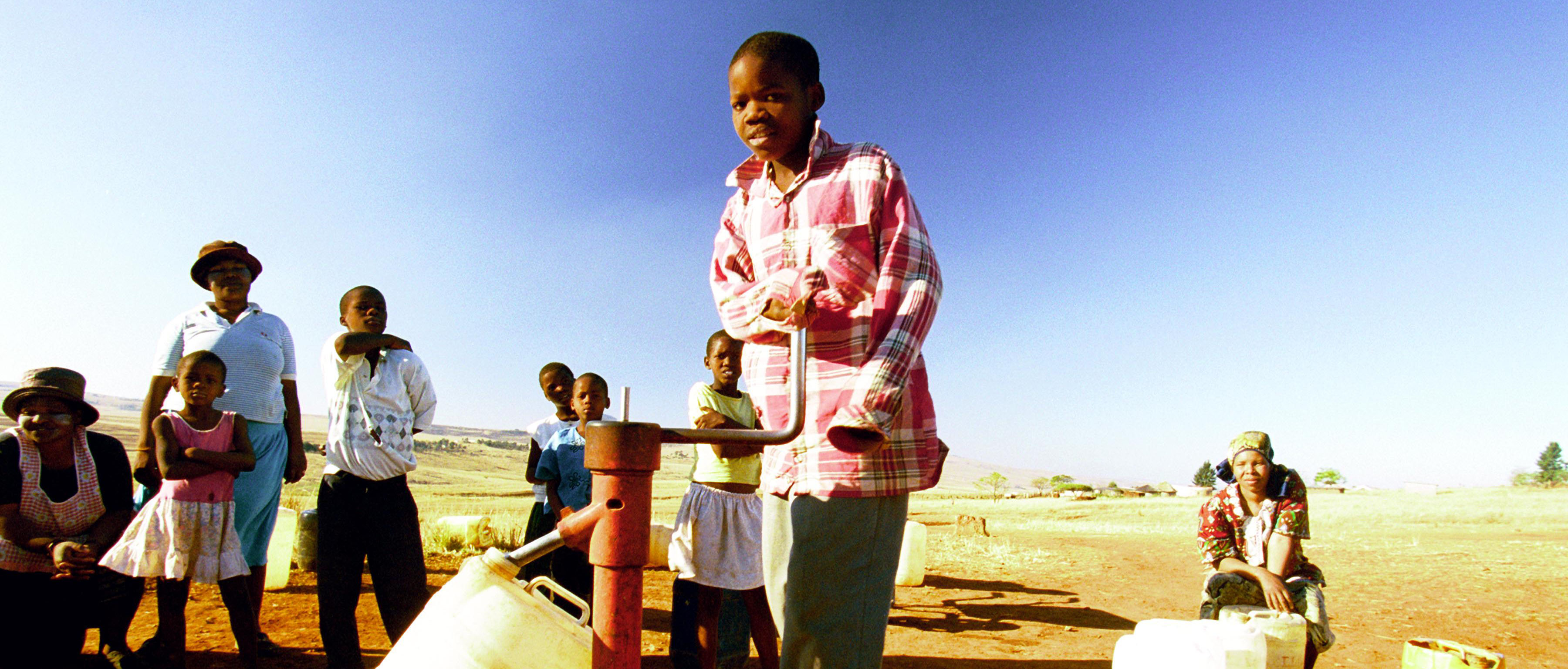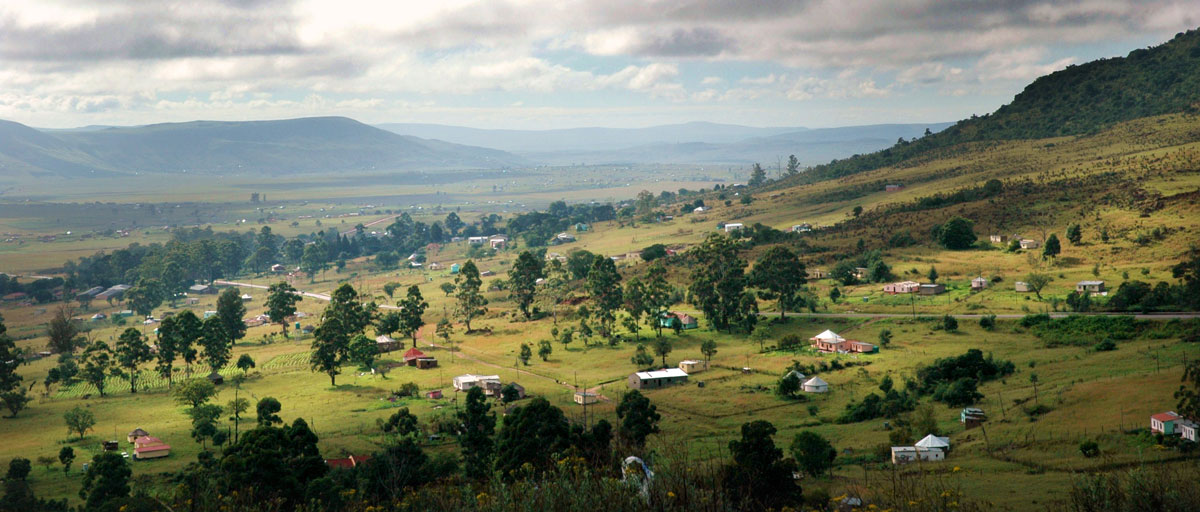
Study in PLOS One examines the spatial relationship between ecosystem service use and human well-being in South Africa. Photo: World Bank Photo Collection/Flickr
Bildtext får vara max två rader text. Hela texten ska högerjusteras om den bara ska innehålla fotobyline! Photo: B. Christensen/Azote
ECOSYSTEM SERVICES AND HUMAN WELL-BEING
Bundles of well-being
Areas with high levels of direct ecosystem service use among households coincides with areas characterised by relatively low levels of human well-being
- Patterns in human well-being and ecosystem service use are similar, but important differences remain to be explored
- Study builds on a 2015 paper from the same authors on ecosystem service use in South Africa
- Paper suggests human well-being indicators could help with ecosystem management in areas with poor ecosystem service data, and where individuals are most dependent on their local environment
Ecosystem services and human well-being are closely interlinked. After all, ecosystem services are benefits that nature provides to humans, and human well-being is dependent on natural provisions such as clean drinking water. While these two concepts clearly overlap, many questions remain unanswered. For example, do patterns of ecosystem service use in a landscape correspond with particular patterns in human well-being?
A study by former SRC PhD student Maike Hamann and centre researchers Oonsie Biggs and Belinda Reyers, addresses this question. More specifically, the study, recently published in PLOS ONE, takes a social-ecological systems perspective to investigate linkages between ecosystem service use and human well-being in South African municipalities. They do so by comparing the spatial distribution of human well-being and ecosystem service use bundles.
Benefits of bundles
As a starting point, the authors use results from previous work; a paper published in Global Environmental Change that mapped different social-ecological systems in South Africa based on distinct bundles of ecosystem service use.
In the current study, the authors compare the spatial distribution of these ecosystem service bundles with the distribution of human well-being bundles across South African municipalities.
A bundles approach may disentangle some of the complexities inherent in the relationship between ecosystem services and human well-being. It can help identify different social-ecological systems, and reveals more about an area than single indicators, such as GDP or the Human Development Index.
Maike Hamann, lead author
The many dimensions of well-being
The study uses data from public sources to examine patterns of human well-being in the South African context. The indicators selected for the well-being bundles represent the Millennium Ecosystem Assessment’s five constituents of human well-being, namely: 1) basic materials for a good life, 2) health , 3) security, 4) good social relations, and 5) freedom of choice and action.
The results of the analysis identify three distinct human well-being bundles in South Africa, which the authors call high, medium, and low income bundles. These bundles are mainly characterized by differences in average household income, unemployment levels, and rates of property ownership among households.
Based on these different characteristics, each municipality in the country was classified into one of these three bundle types. The analysis further reveals that human well-being patterns are significantly clustered across the South African landscape, with the high income bundle occurring mainly in metropolitan areas, the medium income bundle in sparsely populated areas, and the low income bundle in more densely populated semi-rural and rural areas.
In comparing human well-being to the previously determined ecosystem service use bundles, the authors find that the low income bundle areas, with low levels of well-being, largely coincide with high and medium levels of direct ecosystem service use among households. This means that people in these areas make use of their local environment to help cover their basic needs.
In contrast, the high income bundle, with relatively high levels of well-being, coincides with low levels of direct ecosystem service use. These results support previous research that poor and vulnerable members of society depend most heavily on their immediate environment. In South Africa’s case, this represents more than 12 million people, or just over 24% of the population.
Insights: Data poor regions and future work
While this study contributes to the understanding of human well-being and ecosystem services, Biggs highlights practical benefits to these findings. “Data on a variety of human well-being indicators are often more readily available than data on ecosystem services. If different social-ecological systems and their characteristic resource use patterns can be identified using human well-being indicators, then it could assist with ecosystem management in data poor regions.”
This study offers new insights into a spatial understanding of ecosystem service use and human well-being, though the authors note limitations to their approach. First, they highlight that human well-being as defined by this study is based on a modern aspirations. Other, more traditional societies may have different priorities when it comes to well-being. Secondly, in this study human well-being is measured objectively, and not subjectively, which could provide broader insights about this relationship.
Methodology
Using the Millennium Ecosystem Assessment’s five constituents of human well-being, and publicly available census data, the authors calculate human well-being values for the well-being indicators across all 234 municipalities in South Africa. The authors then apply clustering techniques to identify “bundles”, or similar combinations of the five well-being indicators, and visualize these bundles with the help of spatial analysis software (ArcGIS).
To compare South African human well-being bundles and ecosystem service bundles, the authors examine the overlap between the two bundle types in area and population. The authors also test the sensitivity of the human well-being bundles by assessing alternative indicators of well-being, such as Gross Value Added (GVA), an indicator similar to GDP, and a South African deprivation index.
Hamann, M., Biggs, R. and Reyers, B. 2016. An Exploration of Human Well-Being Bundles as Identifiers of Ecosystem Service Use Patterns. PloS one 11(10): p.e0163476.
Maike Hamann is a SRC PhD graduate, and completed her thesis in 2016. She is currently a postdoctoral researcher at the Centre for Complex Systems in Transition at Stellenbosch University in South Africa.
Oonsie Biggs is a professor at Stellenbosch University and researcher at the SRC. Her work focuses on regime shifts in the Anthropocene. She is also involved with the Southern African Program on Ecosystem change and Society and GRAID.
Belinda Reyers is a professor and director of GRAID at SRC. Her research focuses on ecosystem services, biodiversity, disaster risk, and human well-being.







